Image
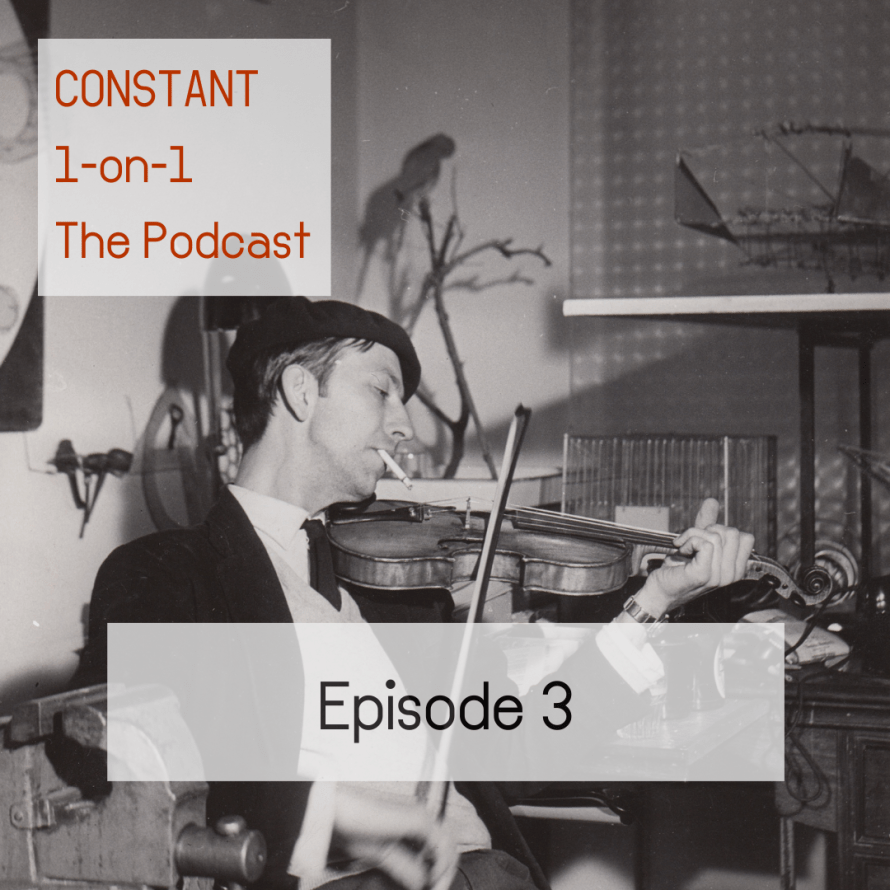
The third episode of Constant 1-on-1 The podcast is online now! This four-episode series dives into Constant’s practice as an artist, his life and the context in which he operated and built his oeuvre. Ans Boersma and Thijs van Elten dig into the archive and question friends, art historians and contemporary artists about the relevance of a legacy like Constant’s in today’s world. Listen here or find Constant 1-on-1 The podcast on Spotify or wherever you listen to podcasts.

In the last episode we explored Constant’s New Babylon project, which he worked on from 1956 till 1974. In episode three we have arrived in the seventies and explore the idea of the Homo Ludens, the playing man. It asks the question: In what ways was Constant a homo ludens in his personality and practice, and in what ways was he not?
“Homo ludens” was a term coined by Dutch cultural historian Johan Huizinga, who, with the publication of his book Homo Ludens, a Study of the Play-Element in Culture in 1938, made an influential contribution to the field of play theory. Inspired by Huizinga, who wrote extensively on the importance of the play element of culture and how play was a necessity in generating culture, Constant created New Babylon: a city in which its inhabitants would no longer have to work and instead could spend all their time on playing and creative expression.
In this episode, we dive deeper into the social commentary he aimed to make with his art, as well as his love for making music, we hear from the following people:
Laura Stamps: curator of Modern and Contemporary Art at Kunstmuseum The Hague
Ronald Tolman: artist and friend of Constant
Alex Timmerman: musician and friend of Constant
Floris Alkemade: architect and former government architect

The Vietnam war is the first war that is broadcasted through mass media. For the first time people are confronted with moving images of war entering their living room through television. The war leads to protests and outrage and influences the work of many artists, including Constant. On April 30th, 1970 Nixon adresses the nation on television. He states that instead of withdrawing the 150.000 troops from Cambodja, he intends to send extra troops thereby prolonging the Vietnam war. On May 1st, 1970 Constant creates the collage Mekong River with the newspaper clippings from Het Parool. It is the first of many. It is a pivotal work that signals the end of New Babylon. Reality has entered Constant’s vision for the future and with that, scenes of destruction enter New Babylon.
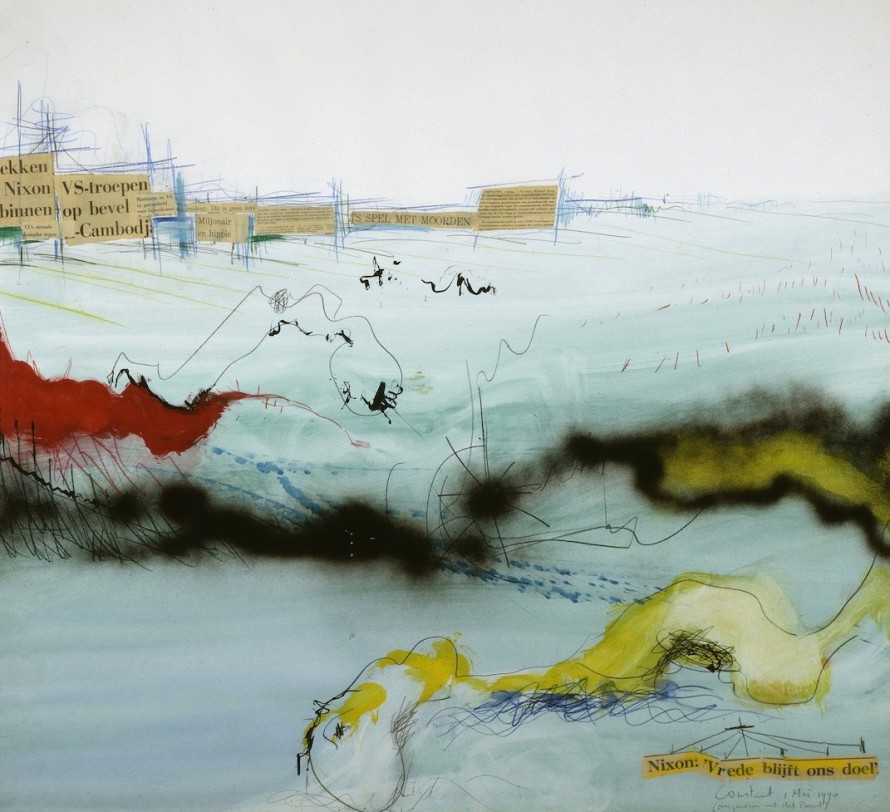
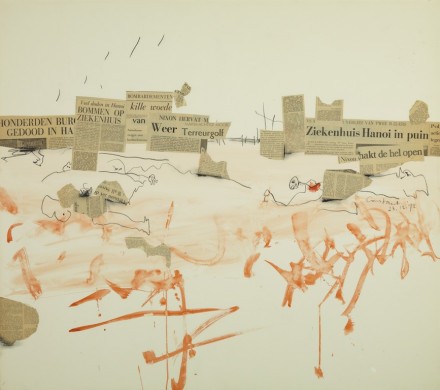
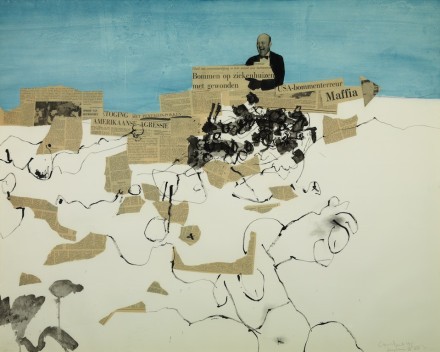
In 1969 Constant starts painting again. His first painting in a long time being Ode a l’Odéon (Tribute to the Odéon), in which he references the student protests in Paris of 1968. Reality clearly starts to seep into his paintings, which can also be seen in a later painting, Massacre de My Lai (My Lai Massacre) and in the way he subtly uses newspaper clippings in the background of his Terrain vague paintings (Wasteland paintings), says Laura Stamps. The Netherlands Institute for Art History (RKD) has all the clippings from newspapers and magazines that Constant collected over the years. Many of them about the Vietnam War, but also articles about how the computer would be able to relieve us of work and change us as humans. Both Stamps and Ronald Tolman saw Constant as a very socially engaged artist, incorporating in his art what he saw happening in the world.
![Constant Nieuwenhuys-Terrain vague [II], 1973](/sites/default/files/styles/grid/public/2023-05/Terrrain%20vague%20II%201973.jpg?itok=YptBE7ay)
Ronald Tolman tells an anecdote about the provenance of the painting, Femme-fleur aka Personnage de nuit (1949). In the CoBrA period Constant had an important exhibition opening [this could be the exhibition at Henry Schou in 1951*]. He does not have a suit and convinces a reluctant tailor to choose a painting as payment for a tailored-made suit.
In 1990 he gets a phone call from Christie’s London to authenticate a Cobra painting which has been offered for sale for too low a price. Constant confirms that it is indeed a painting from his hand. It is the work he traded with the tailor in 1951. The tailor’s children are selling the work because they want to build a house. The work sells for 345.000 Guilders, allowing the sellers to build their new house. Constant is very happy to hear that his trade back in the day has lead to the tailor’s children being able to build a house. The new owner is the French actor and art collector Alain Delon.
*We assume it is an opening in Denmark because the archive entry for this work says that the painting was located in a collection in Denmark and the exhibition Malerier og tegningen at Henry Schou was the first solo exhibition Constant had in Denmark.
Guitarist and mandolinist Alex Timmerman gets acquainted with Constant in the 1980’s through his conservatory teacher Pieter van der Staak because of his passion for old instruments, which Constant had a significant collection of. Timmerman says Constant was mostly interested in portable instruments, likely because of his contact with the nomadic lifestyle of the Roma people. He recounts how he never saw Constant play from sheet music: he always improvised and played by heart.
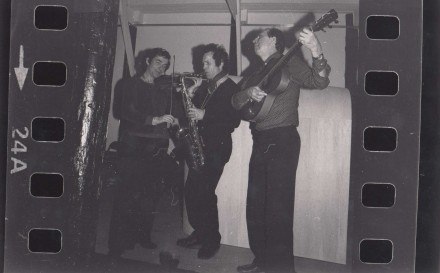
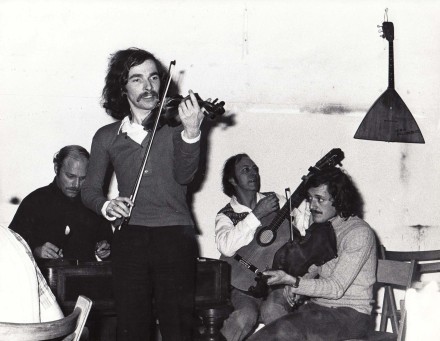
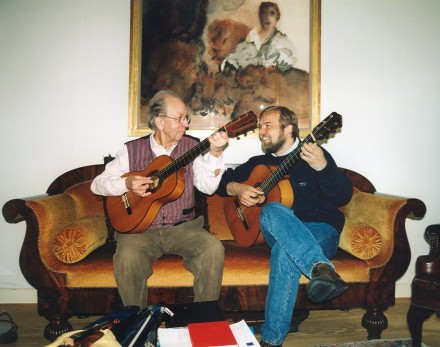
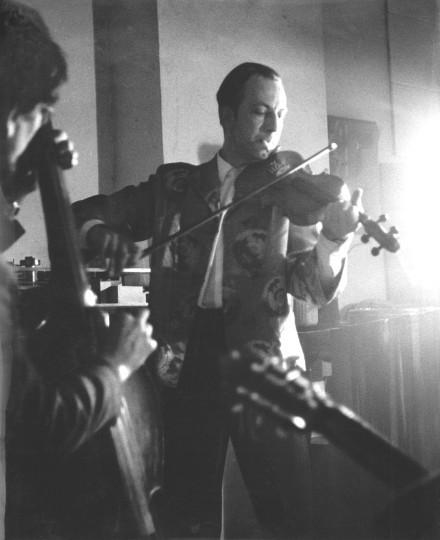
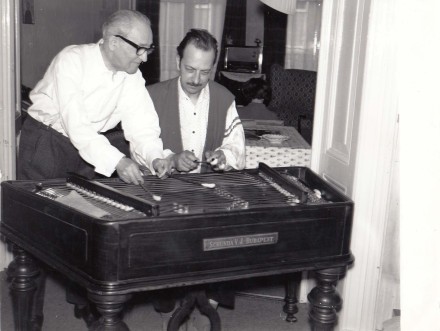
During their first meeting, Constant asks artist Ronald Tolman to make a portrait of him. Tolman recounts how Constant, who never really posed for portraits, sat down as if he was a professional model, and Tolman, who never did a portrait before, just gave it a go. The portrait Ronald Tolman made of Constant ended up winning him first prize for portraiture at the International Biennial Festival of Portrait in Tuzla, in former Yugoslavia.
“Music was his life,” says Tolman. Constant played violin, guitar and cimbalom. He had a very particular way of playing guitar: he would look straight up, pull a bird snout face, and point his guitar’s neck up in the air.
Constant’s encounters with musicians formed an inspiration for several of his works.
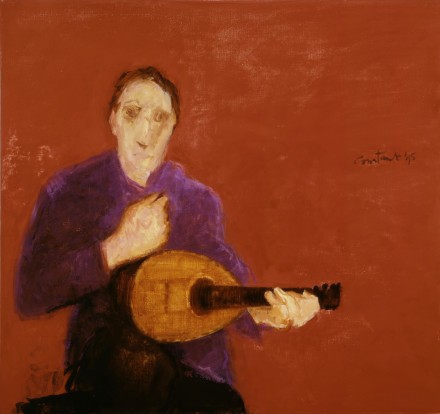
Besides his works that show his love for music, Constant’s oeuvre also contains works of more somber nature. Timmerman refers to several paintings that show how concerned he was with injustices that were happening around the world, which are still, unfortunately, very current today.
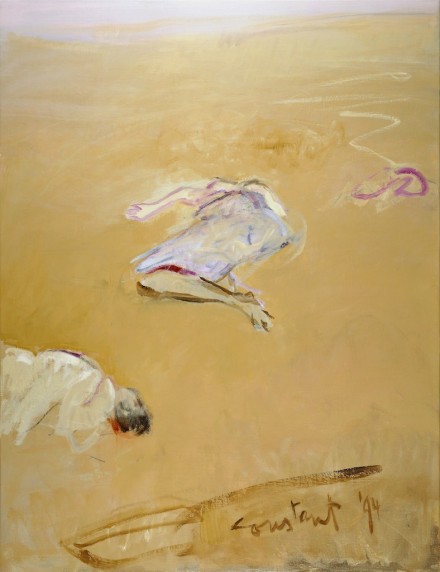
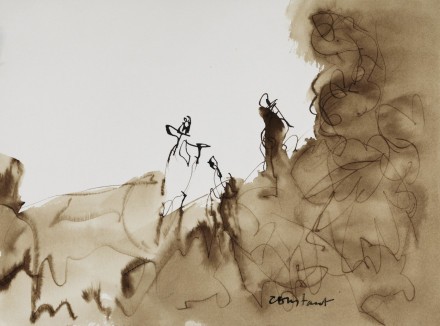
Floris Alkemade sees an attitude of not wanting to do anything a computer can do in Constant’s work and ideas and that this leads him to the question: then what will I do? Constant lived in a time in which automatisation was increasing and people wondered what would happen if machines would become much more prevalent in society. Yet, Alkemade says, Constant was one of few who did not focus on dystopic ideas or what would end, but took a step further and looked ahead at what would become possible.
The next and final episode is called Dreamer. It reflects on the last phase of his life, in which in his art he primarily painted and drew and delves into how we can see Constant’s influence on makers and thinkers today. Listen to episode 4 from August 5th 2023.
Constant 1-on-1 The podcast is a production of Fondation Constant and was made by Ans Boersma and Thijs van Elten.
Content editing: Kim van der Horst, Thijs van Elten and Ans Boersma.
Fact checking: Mia Lodder and Kim van der Horst.
Music: Freek Dijkstra
Music performance: NEEF. with guest musicians Madelief Lammers, Tomás Gomes, Mozes Schrijvers and PEER.
Leader: Aafke Romeijn.
Editing: Ed Spil and Thijs van Elten.
Amsterdams Fonds voor de Kunst, Fentener van Vlissingen, Gifted Art, Iona Stichting